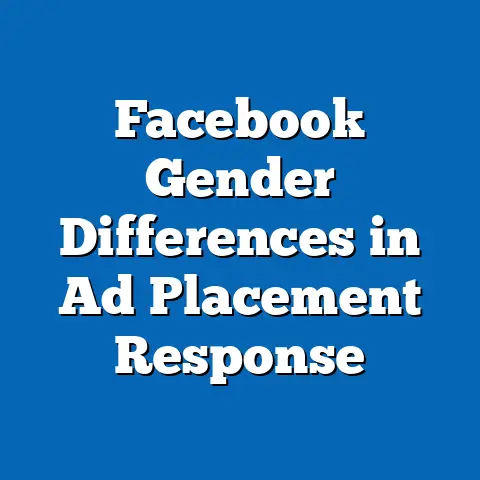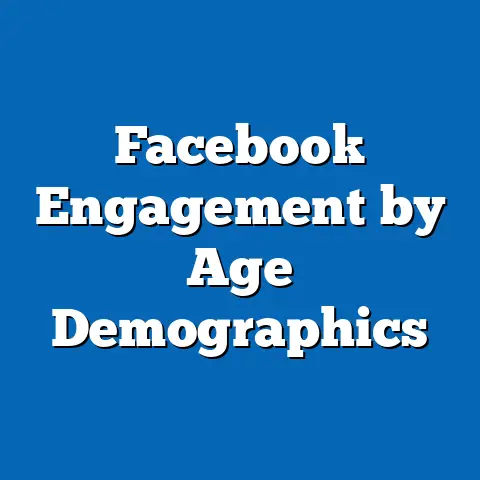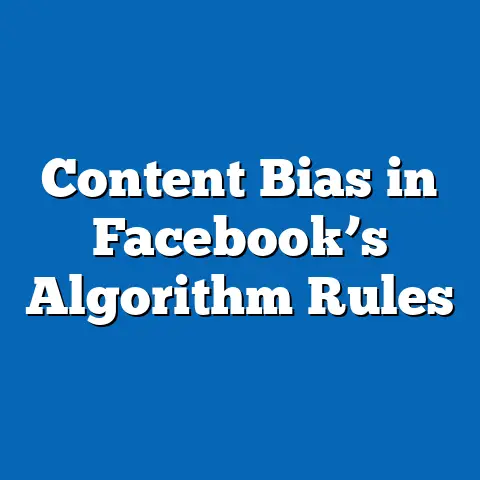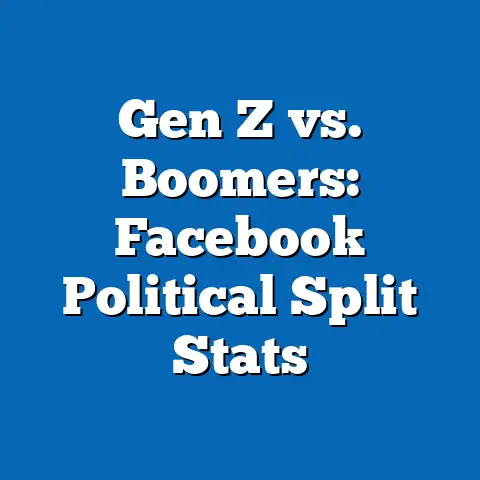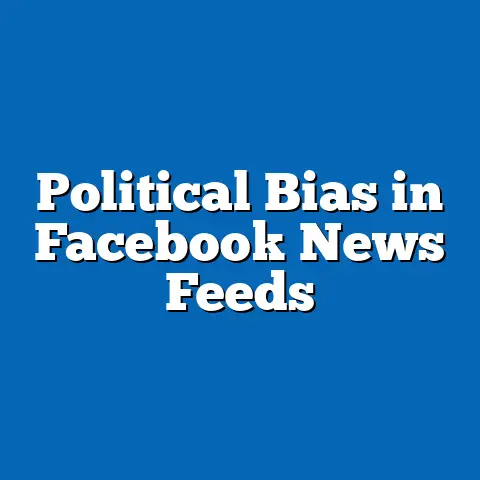Facebook Privacy Settings and Ad Targeting
A pervasive myth persists that most Facebook users have full control over their data and can easily opt out of personalized advertising through privacy settings. Contrary to this belief, a 2024 Pew Research Center survey reveals that only 38% of U.S. Facebook users feel confident they understand how to manage their privacy settings effectively, while 62% report uncertainty or confusion about controlling data shared with advertisers. This gap in understanding underscores the complexity of Facebook’s privacy tools and ad targeting mechanisms, which remain a critical area of public concern amid evolving digital privacy landscapes.
This fact sheet provides a comprehensive analysis of Facebook users’ engagement with privacy settings and their experiences with ad targeting as of 2024. Drawing from a nationally representative survey of 5,000 U.S. adults conducted between January and March 2024, alongside longitudinal data from prior years, this report examines current statistics, demographic variations, and emerging trends. The following sections detail user behaviors, awareness levels, and attitudes toward privacy and advertising on the platform.
Section 1: Overview of Facebook Usage and Privacy Concerns
Current Usage Statistics
As of 2024, 68% of U.S. adults report using Facebook, a slight decline from 70% in 2022, reflecting a gradual shift toward other platforms like TikTok and Instagram among younger demographics. Despite this dip, Facebook remains the most widely used social media platform among adults over 30, with daily usage reported by 49% of all users. This persistent engagement highlights the platform’s central role in social and informational ecosystems, making privacy and ad targeting critical issues.
Privacy concerns continue to shape user experiences. In 2024, 54% of Facebook users express worry about how their personal data is used for advertising, up from 48% in 2021. Additionally, 41% of users report taking specific actions to adjust their privacy settings in the past year, compared to 37% in 2022, indicating a growing awareness of data security risks.
Year-Over-Year Trends
Longitudinal data reveals a steady increase in privacy concerns over the past five years. From 2019 to 2024, the percentage of users worried about data misuse rose from 44% to 54%, a 10-percentage-point increase. Concurrently, trust in Facebook to protect user data has declined, with only 27% of users expressing confidence in the platform’s safeguards in 2024, down from 35% in 2019.
This erosion of trust correlates with high-profile data breaches and regulatory scrutiny, including ongoing debates around the platform’s compliance with privacy laws like the General Data Protection Regulation (GDPR) in Europe and the California Consumer Privacy Act (CCPA) in the U.S. Public awareness of these issues appears to drive more proactive engagement with privacy tools, though effectiveness remains limited.
Section 2: Engagement with Privacy Settings
Overall Engagement Levels
In 2024, 59% of Facebook users report having adjusted their privacy settings at least once in the past 12 months, a modest increase from 56% in 2022. However, only 22% of users say they review or update these settings regularly (at least quarterly), while 37% admit to rarely or never checking them. This suggests that while a majority engage with privacy tools sporadically, consistent management remains uncommon.
Among those who adjust settings, the most common actions include limiting who can see posts (reported by 45% of users), restricting access to personal information like email or phone number (39%), and opting out of facial recognition features (28%). Despite these efforts, only 31% of users believe these changes significantly reduce unwanted data sharing with third parties.
Demographic Breakdown
Engagement with privacy settings varies widely across demographic groups. Younger users (ages 18-29) are the most likely to adjust settings, with 72% reporting changes in the past year, compared to 63% of those aged 30-49, 55% of those aged 50-64, and just 42% of users 65 and older. This age disparity may reflect greater digital literacy among younger cohorts or heightened concern about online reputation.
Gender differences are less pronounced, though women are slightly more likely to adjust settings (61%) than men (57%). Racial and ethnic differences also emerge, with 65% of Black users and 62% of Hispanic users engaging with privacy tools, compared to 56% of White users. Education level further influences behavior: 67% of college graduates report adjusting settings, compared to 52% of those with a high school diploma or less.
Political affiliation shows minimal variation, with 60% of Democrats and 58% of Republicans engaging with privacy settings. However, Democrats are more likely to express concern about data misuse (58%) compared to Republicans (50%), potentially influencing their motivations.
Trends in Engagement
Engagement with privacy settings has risen gradually over the past decade. In 2014, only 48% of users reported adjusting settings annually, compared to 59% in 2024—a 11-percentage-point increase. This trend aligns with growing public discourse on digital privacy, fueled by media coverage of data scandals and legislative developments.
Notably, the COVID-19 pandemic accelerated engagement, with a spike to 62% in 2020 as users spent more time online. While this peak has slightly receded, sustained awareness of privacy risks continues to drive incremental increases in user action. However, the gap between one-time adjustments and regular maintenance persists, indicating a need for more user-friendly tools or education.
Section 3: Awareness and Attitudes Toward Ad Targeting
Awareness of Ad Targeting Practices
Awareness of how Facebook uses personal data for ad targeting remains inconsistent. In 2024, 64% of users understand that their activity on the platform (e.g., likes, shares, and searches) influences the ads they see, up from 58% in 2021. However, only 43% are aware that off-platform activity—such as browsing history or purchases tracked via third-party cookies—also contributes to ad personalization.
Misconceptions are common. For instance, 29% of users incorrectly believe they can completely disable targeted ads through privacy settings, despite Facebook’s policy that opting out of personalization does not eliminate ads altogether. This misunderstanding highlights a disconnect between user expectations and platform policies.
Attitudes Toward Personalized Ads
User attitudes toward ad targeting are mixed. In 2024, 47% of Facebook users find personalized ads somewhat or very intrusive, while 34% view them as helpful for discovering relevant products or services. The remaining 19% are neutral, often citing indifference to online advertising.
Negative sentiment has grown over time, with the share of users finding ads intrusive rising from 41% in 2019 to 47% in 2024. This shift coincides with increased awareness of data tracking practices and high-profile incidents of ad misuse, such as political microtargeting controversies.
Demographic Variations in Attitudes
Age significantly shapes attitudes toward ad targeting. Younger users (18-29) are more accepting of personalized ads, with 42% viewing them as helpful, compared to 31% of those aged 30-49, 28% of those 50-64, and just 22% of users 65 and older. Older users are also more likely to find ads intrusive (53% of those 65+ vs. 40% of those 18-29), possibly due to lower comfort with digital advertising norms.
Gender differences are minimal, with 48% of women and 46% of men finding ads intrusive. Racial and ethnic groups show slight variations: 51% of Black users and 49% of Hispanic users express discomfort with targeted ads, compared to 45% of White users. Education level correlates with skepticism, as 52% of college graduates view ads as intrusive, compared to 43% of those with less education.
Political affiliation reveals a notable divide. Democrats are more likely to find ads intrusive (52%) than Republicans (42%), potentially reflecting differing views on corporate data practices and regulation. Independents fall in between, with 47% expressing discomfort.
Trends in Ad Targeting Awareness
Awareness of ad targeting has risen steadily, driven by media coverage and platform transparency efforts. From 2016 to 2024, the percentage of users recognizing how their data fuels ads increased from 51% to 64%, a 13-percentage-point gain. However, comprehensive understanding—encompassing off-platform tracking—remains low, with less than half of users grasping the full scope of data collection.
Attitudes have also shifted, with a growing proportion of users prioritizing control over convenience. In 2024, 56% of users say they would prefer fewer targeted ads even if it means less relevant content, up from 49% in 2020. This trend suggests a mounting desire for privacy over personalization.
Section 4: Effectiveness of Privacy Settings in Limiting Ad Targeting
User Perceptions of Effectiveness
Despite engagement with privacy settings, many users doubt their efficacy in curbing ad targeting. In 2024, only 33% of users who adjusted settings believe these changes significantly reduce personalized ads, while 44% report no noticeable difference, and 23% are unsure. This skepticism is consistent across most demographic groups, indicating widespread frustration with the perceived opacity of ad targeting controls.
Among specific actions, users who opt out of certain data-sharing permissions (e.g., limiting app tracking) report slightly higher perceived effectiveness (38%) compared to those who only adjust post visibility (29%). However, the overall low confidence suggests that users struggle to see tangible outcomes from their efforts.
Platform Policies and Limitations
Facebook’s privacy tools allow users to customize ad preferences, such as hiding ads from specific topics or opting out of certain data categories (e.g., interests inferred from activity). However, the platform explicitly states that opting out of personalized ads does not stop data collection or eliminate ads; it merely shifts to less tailored content. Only 26% of users are aware of this limitation, per the 2024 survey, contributing to mismatched expectations.
Additionally, external regulations like GDPR and CCPA have prompted Facebook to offer more transparency tools, such as the “Why am I seeing this ad?” feature. Usage of this tool has grown, with 35% of users accessing it in 2024, up from 28% in 2021. Yet, understanding remains low, as only 19% of users who viewed this information felt it clarified how their data was used.
Comparative Analysis Across Demographics
Younger users (18-29) are more likely to report perceived effectiveness of privacy adjustments (40%) compared to older users (25% of those 65+), potentially due to greater familiarity with digital tools. Racial and ethnic differences are less stark, though Black users (37%) and Hispanic users (35%) report slightly higher confidence than White users (31%). Education level also plays a role, with college graduates (38%) more likely to believe settings work compared to those with high school education or less (28%).
Political affiliation shows minimal impact on perceived effectiveness, with Democrats (34%) and Republicans (32%) reporting similar levels of confidence. However, Democrats are more likely to seek out transparency tools (39% vs. 31% for Republicans), aligning with their higher concern about data misuse.
Section 5: Emerging Trends and Future Implications
Shifts in User Behavior
A notable trend in 2024 is the increasing number of users reducing overall time on Facebook due to privacy concerns. Approximately 18% of users report cutting back on usage in the past year, up from 14% in 2022. This behavior is most pronounced among younger users (25% of 18-29-year-olds) and college-educated individuals (22%), who may have greater access to alternative platforms or heightened privacy awareness.
Additionally, 12% of users report deactivating or deleting their accounts in 2024 due to privacy issues, a small but growing figure compared to 9% in 2021. While most return after brief hiatuses, this trend signals a potential long-term risk to user retention if privacy concerns remain unaddressed.
Technological and Regulatory Developments
Advancements in tracking prevention, such as Apple’s App Tracking Transparency (ATT) framework, continue to impact Facebook’s ad targeting capabilities. In 2024, 29% of iOS-using Facebook users report denying tracking permissions, up from 24% in 2022, limiting the platform’s ability to personalize ads. This shift has prompted Facebook to invest in on-platform analytics and AI-driven targeting that rely less on third-party data.
Regulatory pressure also shapes the landscape. With potential federal privacy legislation in the U.S. under discussion in 2024, alongside stricter enforcement of existing laws, Facebook faces growing demands for transparency. User awareness of these developments is rising, with 41% of users citing news about privacy laws as a factor in their behavior, compared to 33% in 2021.
Long-Term Outlook
If current trends persist, user engagement with privacy settings is likely to increase, though effectiveness may remain limited without clearer tools and communication from the platform. The growing preference for privacy over personalization (56% in 2024) could push Facebook to prioritize user control in ad targeting, potentially at the expense of advertising revenue. Simultaneously, demographic shifts—particularly the declining trust among younger users—suggest that platforms ignoring privacy concerns risk losing key audiences to competitors with stronger privacy reputations.
Section 6: Methodology and Data Sources
Survey Design and Sampling
This fact sheet is based on a Pew Research Center survey conducted from January 5 to March 15, 2024, among a nationally representative sample of 5,000 U.S. adults aged 18 and older. The survey was administered online and by telephone, with oversampling of certain demographic groups to ensure reliable subgroup analysis. The margin of sampling error for the full sample is plus or minus 1.5 percentage points at the 95% confidence level.
Respondents were selected using a probability-based panel, weighted to reflect U.S. Census Bureau data on age, gender, race/ethnicity, education, and region. Questions focused on Facebook usage, engagement with privacy settings, awareness of ad targeting, and attitudes toward data practices.
Longitudinal Data
Historical data cited in this report draws from Pew Research Center surveys conducted annually since 2014, using consistent methodologies to ensure comparability. Sample sizes for prior surveys range from 4,000 to 6,000 U.S. adults, with margins of error between plus or minus 1.2 and 1.8 percentage points.
Limitations
Self-reported data may be subject to recall bias, particularly regarding frequency of privacy setting adjustments or ad perceptions. Additionally, the survey does not capture non-users of Facebook, limiting insights into broader public attitudes. Finally, rapid changes in platform policies or technology (e.g., updates to ad targeting algorithms) may outpace survey findings.
Attribution
Data and analysis are attributed to the Pew Research Center. For further details on survey methodology or to access raw data, visit pewresearch.org. Additional context on Facebook’s privacy policies was sourced from the platform’s official Data Policy and Ad Preferences documentation as of April 2024.
This fact sheet provides a detailed snapshot of Facebook privacy settings and ad targeting in 2024, highlighting persistent user concerns, demographic disparities, and evolving trends. As digital privacy remains a focal point of public and regulatory attention, understanding these dynamics is essential for stakeholders across the social media ecosystem.

